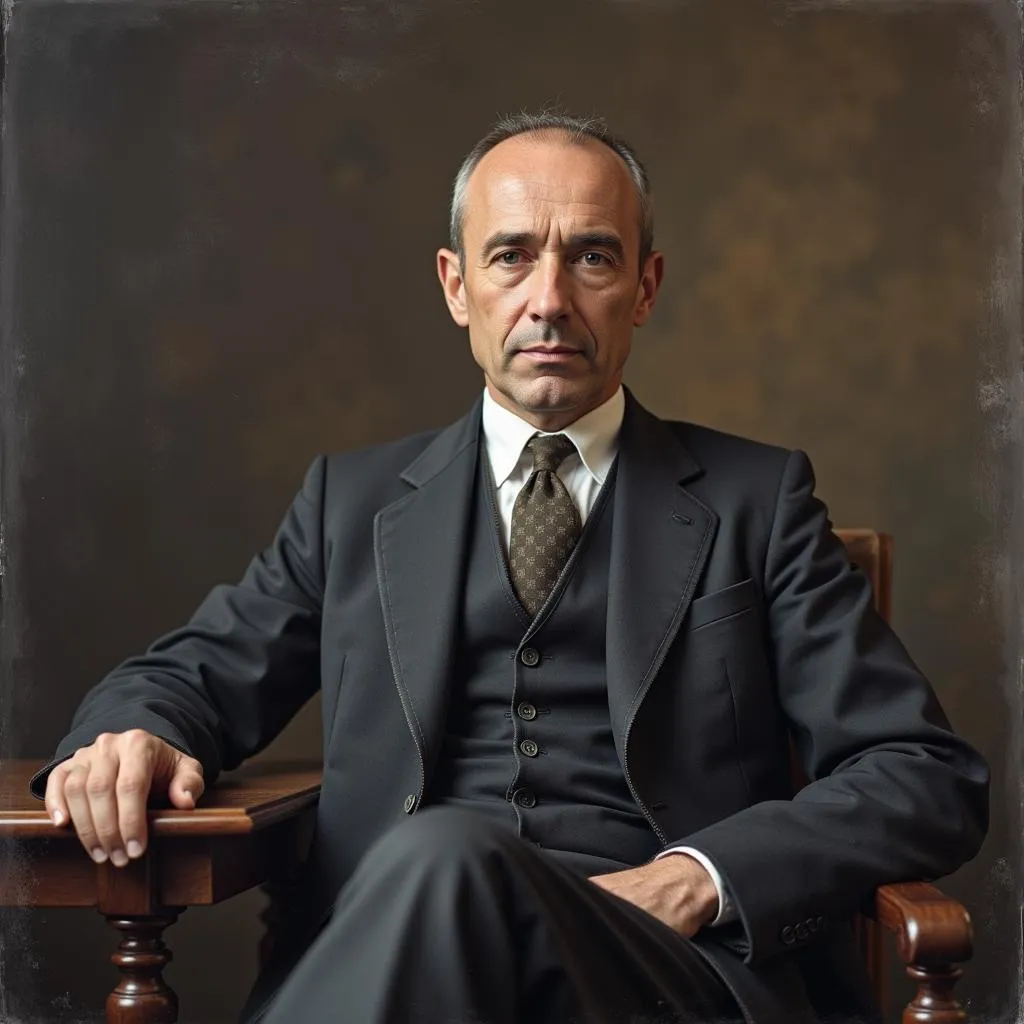The history of FC Barcelona is incomplete without acknowledging the pivotal role played by its presidents. From the club’s inception in 1899, each Barcelona president has left their mark, shaping the club’s identity, values, and of course, its success on the pitch. “Barcelona president history” is more than just a string of names and dates; it’s a narrative interwoven with passion, ambition, and the unwavering pursuit of excellence.
The Pioneers: Laying the Foundation
The early years of FC Barcelona were marked by the visionary leadership of its founder, Joan Gamper. Gamper, a Swiss national with a deep love for football, not only established the club but also served as its president on multiple occasions between 1908 and 1925. His unwavering commitment to the sport and his inclusive vision, welcoming players from diverse nationalities, laid the groundwork for the club’s future success.
Following Gamper’s footsteps, a succession of presidents navigated the club through the turbulent times of the early 20th century. They faced numerous challenges, from financial instability to political upheaval, yet they remained steadfast in their commitment to upholding Gamper’s legacy.
Eras of Transformation: Shaping the Barcelona Identity
The history of Barcelona presidents is punctuated by eras of significant transformation. One such period came under the presidency of Josep Suñol (1935-1936). Suñol, a fervent Catalan nationalist, instilled a strong sense of Catalan identity within the club, further cementing its connection with the region and its people.
The post-Spanish Civil War era saw the club emerge as a symbol of Catalan pride and resistance. Presidents like Agustí Montal i Galobart (1946-1953) and Enric Llaudet (1961-1968) played instrumental roles in rebuilding the club amidst challenging political circumstances.
The Núñez Era: Ushering in an Era of Dominance
The presidency of Josep Lluís Núñez (1978-2000), the longest-serving president in Barcelona’s history, marked a turning point for the club. Núñez implemented a series of strategic decisions that transformed Barcelona into a global powerhouse. He prioritized financial stability, invested heavily in youth development (La Masia), and most notably, appointed Johan Cruyff as head coach.
The “Dream Team” era under Cruyff, nurtured under Núñez’s presidency, saw Barcelona achieve unprecedented success, culminating in the club’s first European Cup victory in 1992. Núñez’s reign laid the foundation for the club’s dominance in the 21st century.
The Modern Era: Continuing the Legacy
The 21st century has witnessed Barcelona reach new heights, fueled by a continued commitment to attacking football and nurturing homegrown talent. Presidents Joan Laporta (2003-2010) and Sandro Rosell (2010-2014) built upon the foundations laid by their predecessors. Laporta’s decision to appoint Pep Guardiola as manager in 2008 ushered in a golden era for the club, characterized by a mesmerizing style of play and a plethora of trophies.
The recent years, under the leadership of Josep Maria Bartomeu (2014-2020) and current president Joan Laporta (2021-present), have presented their own unique challenges. Despite financial constraints and the departure of Lionel Messi, the club continues to strive for success on and off the pitch.
Conclusion
The “Barcelona president history” is a testament to the unwavering spirit of the club. From the visionary leadership of Joan Gamper to the modern-day challenges faced by Joan Laporta, each president has played a part in shaping FC Barcelona into the institution it is today. As the club moves forward, the legacy of its presidents will continue to inspire future generations to uphold the values of ambition, sportsmanship, and Catalan pride that are synonymous with the Blaugrana jersey.
